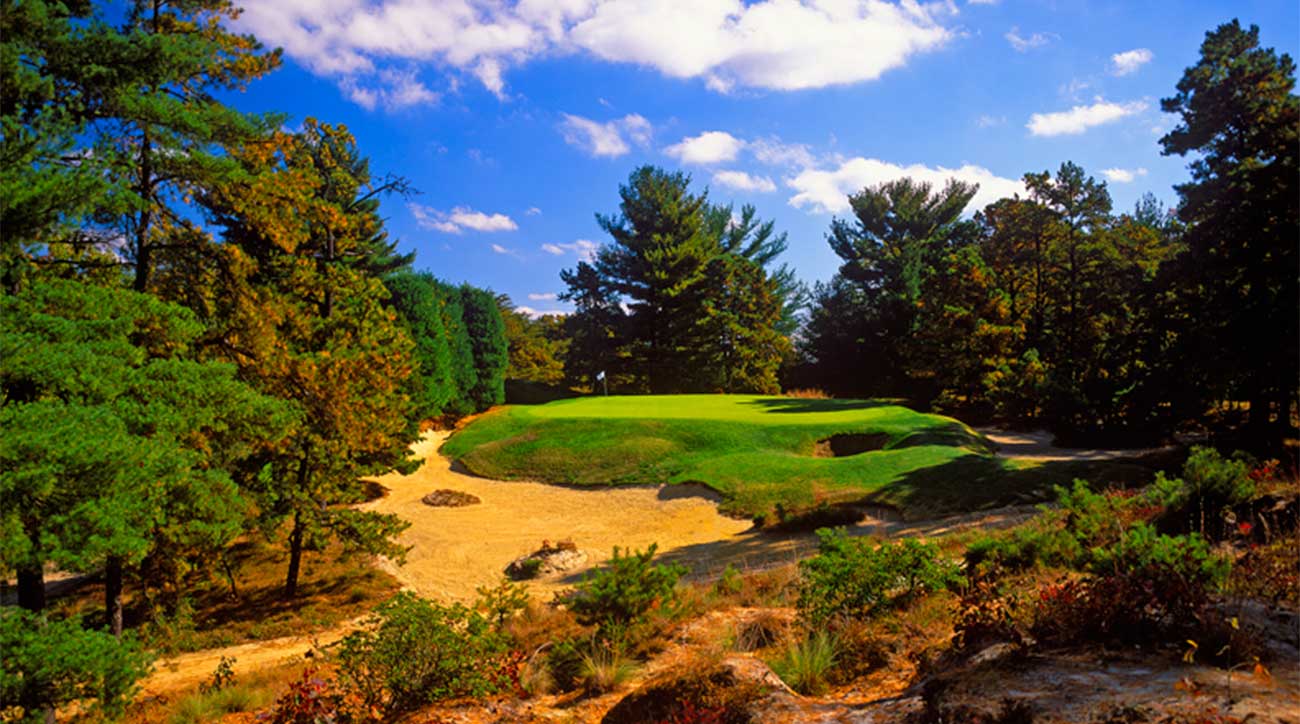Here are the 5 most famous bunkers in golf (and how to conquer them)

Oakmont Country Club's famed church pew bunkers are one of golf's greatest tests.
Getty Images
What’s the most common hazard in golf? The one you can find on (almost) every hole on every course. Bunkers. And while many bunkers are unimaginative, there are a few that are so great they earn status.
Sometimes, status comes from imitation — bunkers that are reused on courses around the world because of their excellence and strategic vigor. Others are so iconic that no one would dare copy them.
So what separates a famous bunker from an average one? Its name. Here are the five most famous (and weirdly named) bunkers in golf.
Principal Nose
The original appears on the 16th hole of the Old Course at St. Andrews. Maybe the best name for a bunker in all of golf, this design has been copied all over the globe. Two bunkers sit side by side with a bump (nose) between them, making them appear similar to nostrils.
From a distance, you might not see the resemblance, but once you hear their name, it’s hard to think of anything else. Like many features from overseas, C.B. Macdonald was the first to bring the principle (pun intended) to the U.S., first at the National Golf Links of America, and then at several other courses designed with Seth Raynor. This bunker complex is large enough that it forces strategy when placed correctly, the best are often placed right in the middle of the fairway.

Lion’s Mouth
The name lion’s mouth incites fear into whoever hears it, and for good reason. This bunker is part of the lion’s mouth hole template, which is one of the most striking in all of golf. The original is also from St. Andrews, but the Old Course’s version doesn’t look much like the template that made its way throughout golf.
There are variations on shape, but typically a lion’s mouth bunker sits below the surface of the green, meaning you might short side yourself to several pin locations because the green will surround you. It is a treacherous-looking shot, but makes for some wonderful strategic questions.
The Country Club of Charleston has a wonderful example of a Seth Raynor-built lion’s mouth. Since then, Coore and Crenshaw built a fantastic lion’s mouth template at Sand Hills and Gil Hanse built one at Rustic Canyon.
Road Hole bunker
This bunker comes from possibly the most iconic hole in all of golf, the 17th (Road Hole) at St. Andrews. While the hole and the bunker are named for the road that runs behind the green, the deep pot bunker that sits in front might be even more integral to the hole’s strategy.
The bunker is deep and difficult to escape, but it is just as much about the angles it forces players to consider from the tee. This bunker usually sits off the front left portion of a green with little depth. This forces players to try to stay as far right as possible for the best angle into the hole, staying far away from this dreaded bunker. Seth Raynor and C.B. Macdonald built many versions of this bunker and template all over the U.S.

Church Pews
The church pews have undergone some major changes since the original Oakmont Country Club design by Henry Fownes. Its current iteration is a massive bunker with twelve turf islands within.
This round-killer sits between the 3rd and 4th fairways and can derail you before you even find a rhythm. The “pews” as they are called, are long strips of grass that run from one end of the bunker to the other, perpendicular to the direction of the hole. This means you can get unlucky trying to clear a lip no matter where you end up.
The area originally had separate bunkers, then there were eight pews, now it’s all the way up to twelve. And you don’t just have to avoid them once, but twice. When playing the third, the church pews are down the left, but there isn’t much room to bailout with deep bunkers down the right as well. On the par-5 4th, there are again bunkers guarding the opposite side of the fairway. You might find islands in bunkers around the US that make lies more difficult, but none will make you pray to the heavens like the pews at Oakmont.
Devil’s A******
It might be more accurate to call our last bunker infamous rather than famous. We find ourselves at the #1 ranked course in the world, George Crump’s master creation, Pine Valley.
Hole #10 brings players to a short par-3, only 142 yards from the tips. The green falls off around much of the edge with large bunkers on either side. But neither of those are what truly strikes fear into the hearts of golfers.
Sitting just short of the green on the right side is a bunker so small and deep that you need stairs to get in and out. Trying to get a sand shot over the front wall of this funnel-shaped bunker is nearly impossible. The smart shot is often to play out backward. The front of the green slopes off toward this bunker so even a shot you think is safe might slowly pick up speed as it funnels down into the bunker (with you watching in horror). The hole might be short, but like the bunker, the penalty for a mistake might be the steepest in the world.













